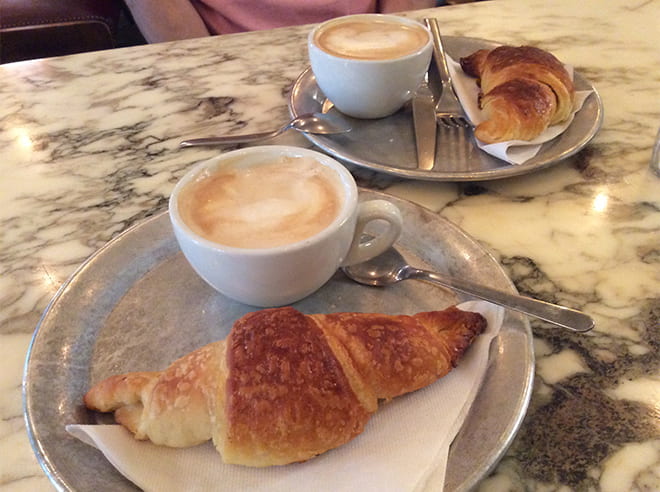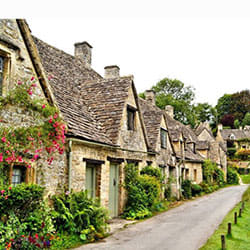In Spain however, the habit for most people is to just have a quick and simple breakfast of bread and coffee, then a leisurely main meal at lunch, 3 courses including dessert, with wine or other drinks and chat, then after getting home, a light dinner of bread, cheese, fruit, and so on. By the way, paella, representative of Spanish cuisine, is considered a heavy food you eat at lunch, the main meal of the day, and is rarely served at dinner, whether at home or a restaurant. The custom is to have the main meal at lunch, except for special dinner parties, and then, the prices for the same dish at the same restaurant are usually never higher at dinner. What’s more, they say that Spaniards eat 5 times a day, a number that includes a 10 o’clock snack between breakfast and lunch, and a 3 o’clock snack between lunch and dinner, which is not much different from Japan.
Now to the title of this article, breakfast, which is called “desayuno” in Spanish. I guess this meal is the only one that people never get tired of, no matter where they live in the world, despite it being the same sort of meal, every day, 365 days a year. Of course, there are regional variations, in Spain as well, and there is also some variation among individuals, but it is basically bread and coffee, not cooked food like eggs, bacon, sausages, or pancakes and the like. The so-called “continental breakfast” is the norm.

Photo 1

Photo 2
Photo 1 shows the breakfast I ate every morning in a nearby bar when I was staying in a port town in Andalucía. There’s milk coffee, “churros” (this is a serving for 1 person), with olive oil and tomato paste on toast.
Photo 2: This is an orthodox French style breakfast: just croissant and coffee (in Marseille).

Photo 3
For my breakfast at home, I stick to the same thing every day, dry-cured ham between toast with olive oil, banana and yogurt, and milk tea. But I drop my usual habit if I’m traveling and the hotel has a breakfast buffet. I greedily pile up my plate with this, that, and the other in an attempt to make up even a little of the cost of the room, a practice that may cast a little doubt over my character. Photo 3 is photographic evidence of this. It shows the first round with very modestly loaded plates of things I don’t normally eat for breakfast: omelet, cheese, crispy bacon, and “porras” (churros’ big brother). But the onslaught continues with a second round and a third round of vegetables, fruit, Danish pastries, and desserts.
Incidentally, if you stay at a “ryokan” (inn) in Japan, you take the full course, unlike your usual breakfast. The offering includes the standard items like rice, miso soup, “natto” (fermented soybeans), Japanese omelet, grilled fish, simmered tofu, stewed vegetables, “ohitashi” (boiled greens in a soy-based sauce) and pickled vegetables, toasted nori seaweed, and “tsukudani” (seafood, meat, or seaweed simmered in soy sauce and mirin). At inns that make their breakfast a selling point, they serve up an almost aberrant, dizzying food world from early morning with things like salmon roes, sashimi, sushi, “kaisendon” (rice bowl topped with sashimi, etc.), and grilled eel. I don’t know about workers who have just come off a night shift, or sporty people who train in the morning, but I wonder how you would cope with eating so much? But then, you’d want to try it once, I guess. In French, they call breakfast “petit déjeuner” (“small lunch”), but such a lavish breakfast must surely be a “grand déjeuner” (“big feast lunch”).
To change the topic, it seems that the snacks that go with drinks are mostly breakfast side dishes, so conversely, it may be a law of nature that seeing Japanese breakfast side dishes makes you want to drink alcohol… So end these ramblings of a tippler overtaken by a sense of nostalgia.






























































